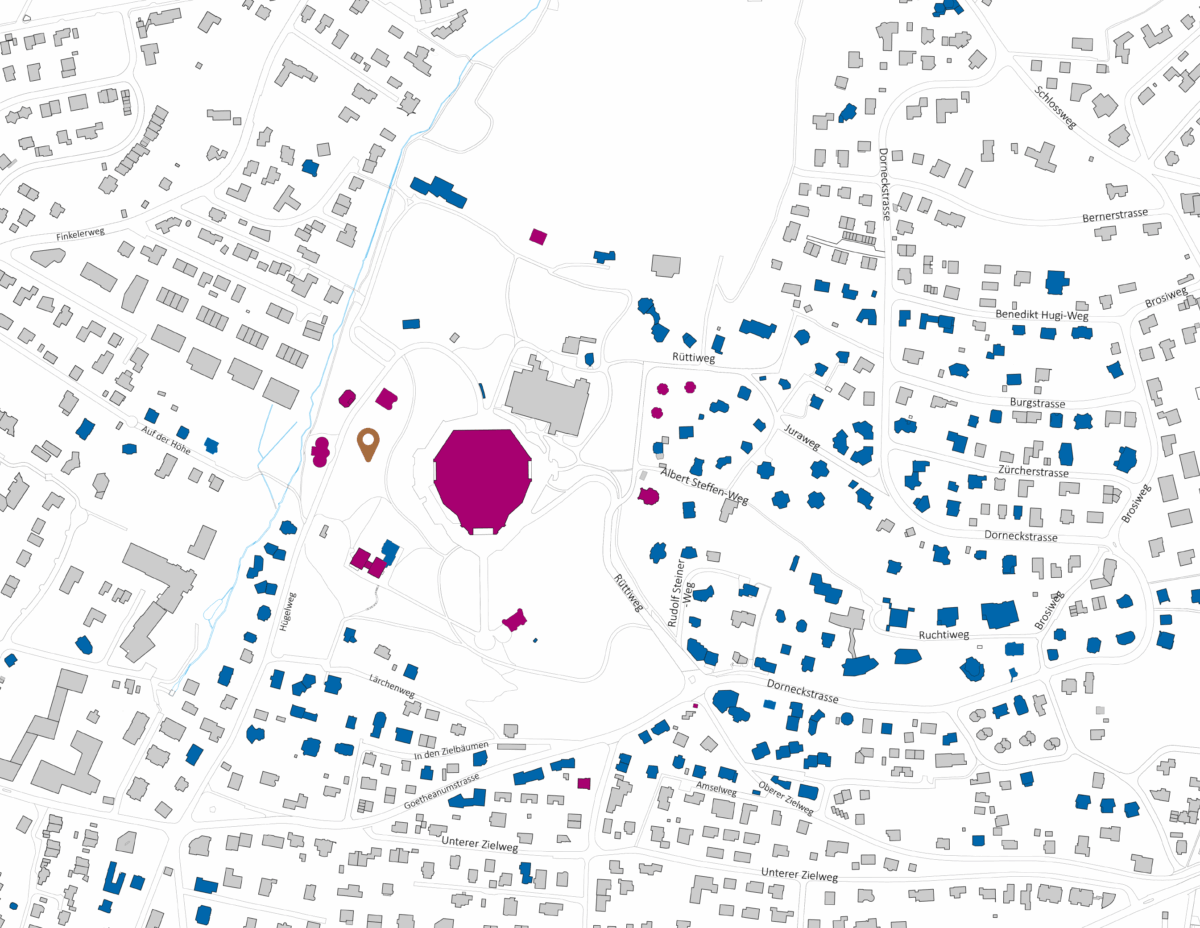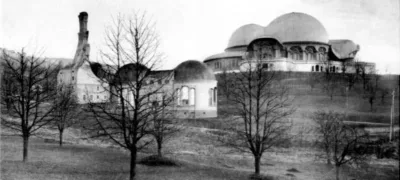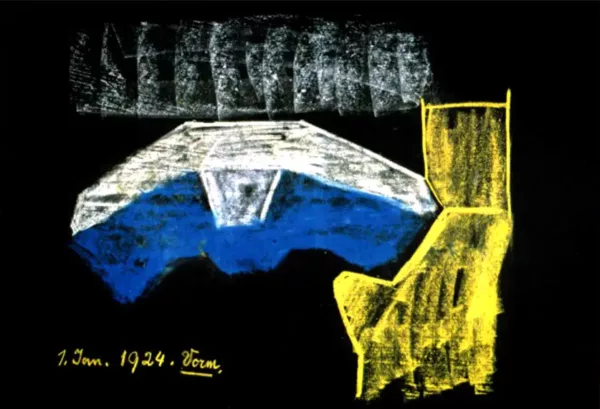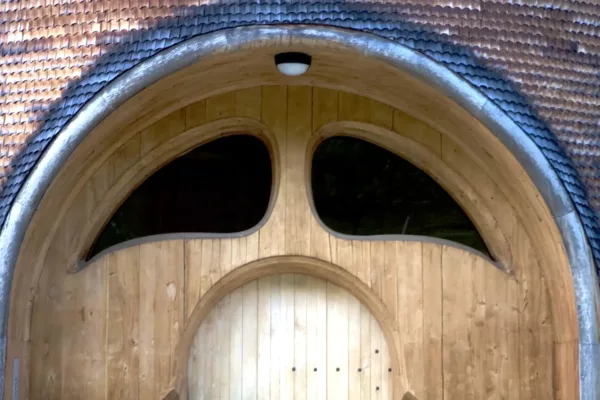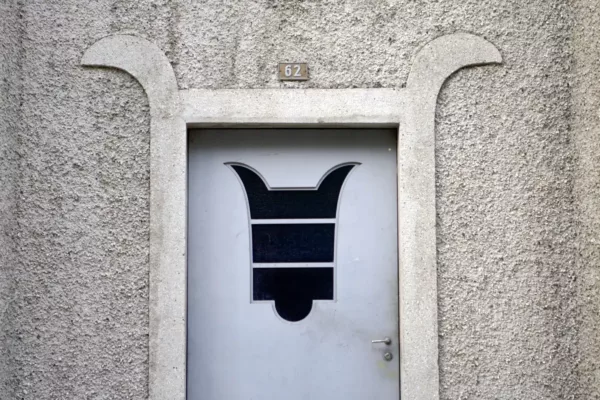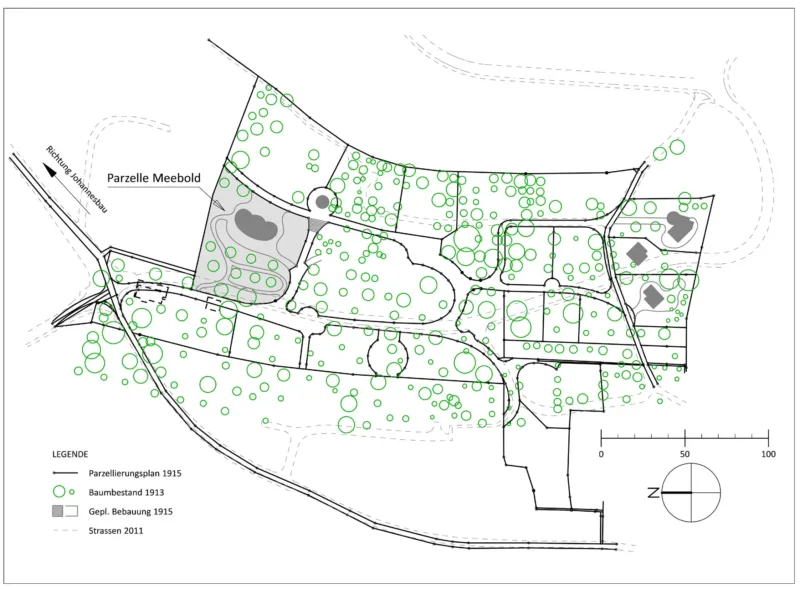5. Style (for glass house and boiler house)
Development of a design language
Style elements
Rudolf Steiner was already keen to give the new world view its own style in the building projects of the then still Theosophical Society in Berlin and Munich. Initial attempts in Berlin, Stuttgart and Malsch had mainly focused on the interior design. In Dornach, this new style was now to become visible to the outside world, first in the Johannesbau, the first Goetheanum, but then also in the buildings of the developing anthroposophical colony.
Three aspects were of central importance in the design of the buildings:
- A noticeable relationship between the buildings and the Goetheanum building based on the so-called tree motif as a defining element.
- Expression of the function in the buildings, taking into account the anthroposophical world view as well as a peaceful aura of the buildings to achieve the same feelings among the users.
- Implementation of the two aforementioned aspects in the designs by applying the principles of Goethe’s concept of metamorphosis, polarity and intensification as well as inversion.
The first buildings, such as the so-called Glass House and the Heating House, were regarded by Rudolf Steiner himself as the first imperfect attempts and beginnings. However, they formed the starting point for the fascinating development process of building forms on Dornach Hill and in anthroposophical buildings worldwide.
Task: Try to trace the relationship between Glashaus, Heizhaus and e.g. Haus Friedwart. How do the window shapes feel in the glass house and the boiler house?
Discover the surroundings
Further stations
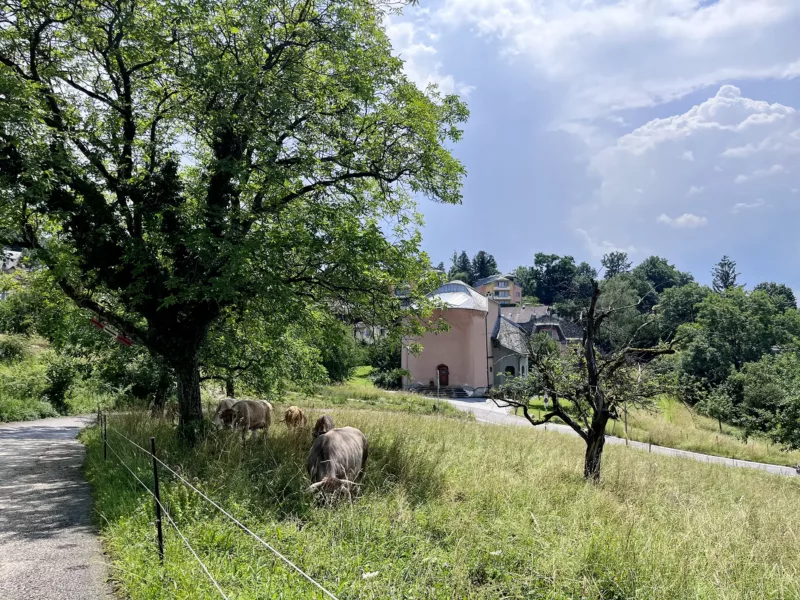
1. Landscape
The Goetheanum and the surrounding sculpturally and organically shaped houses were planned into an old cultural landscape. Architecture, nature and landscape design were to form a special unity and enhance each other’s impact.
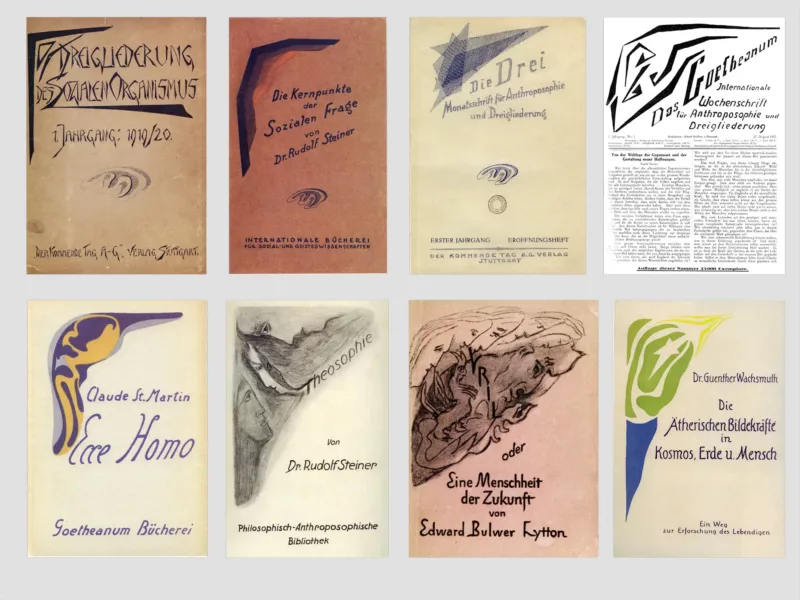
2. Links
The buildings of the Dornach Colony were consciously created from the anthroposophical world view. They are connected in many ways with other branches of anthroposophy, as an expression, as a framework, as the result of development processes.
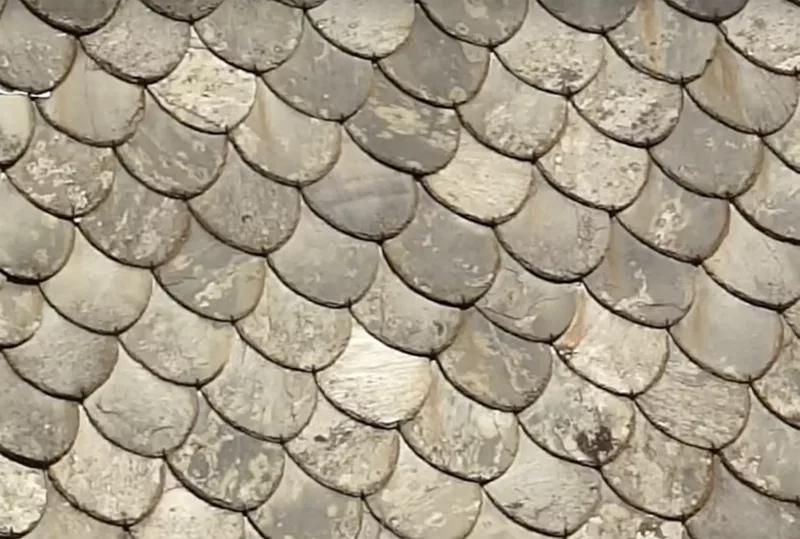
3. Material
In addition to the forms, some special materials also characterize the building on the Dornach hill. Norwegian slate, exposed concrete or colored plaster, wood are important elements of the special atmosphere around the Goetheanum.
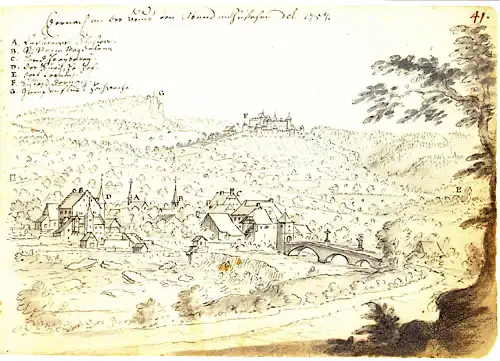
4. Environment
From the very beginning, the links to the Dornach community were diverse and not always clear. The anthroposophists who wanted to build were an economic factor, a foreign body, an enrichment and a change agent. Without them, however, neither the Anthroposophical Society nor Dornach would be what they are today.
Location
